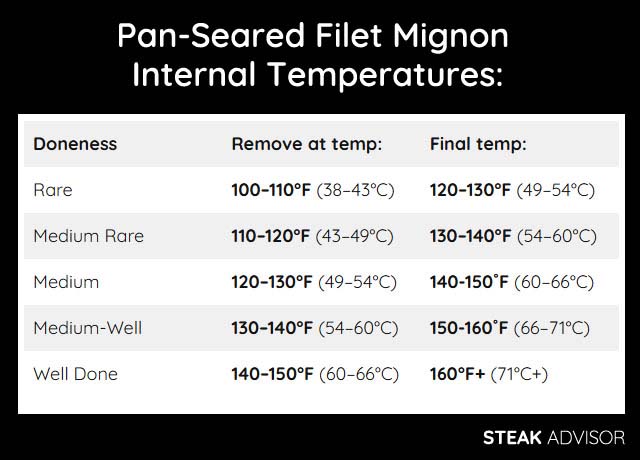Description
A pan-seared filet mignon, basted with butter, garlic, and fresh herbs for better flavor, is one of the best ways to prepare this cut of meat. Learn how to do it all in a cast-iron skillet—no oven needed.
Ingredients
- Filet mignon (ideally around 2 inches/5 cm thick)
- 1 tablespoon high-smoke point oil (I recommend avocado oil)
- 1 teaspoon kosher salt
- 1 teaspoon ground pepper
- 2 tablespoons unsalted butter (about 28 g)
- 2-3 garlic cloves
- 2 thyme or rosemary springs
Instructions
- Prepare the Filet Mignon: Start by patting the filet mignon dry with paper towels. Once it’s nice and dry, season both sides generously with salt (including edges). Let the salted filet mignon sit at room temperature for at least 45 to 60 minutes (that’s the bare minimum after salting). If you have more time and want a better flavor and crust, leave it uncovered in the fridge for about 4 hours to allow the surface to dry out even more. For the best flavor, texture, and crust, leave it uncovered in the fridge overnight. If the steak has been in the fridge after salting, remember to take it out and let it sit at room temperature for an additional 30 minutes before cooking. That way, it’ll cook more evenly (no more cold centers).
- Preheat the Pan: Place the pan on medium-high heat for 2-3 minutes. Add a tablespoon of high smoke-point oil (I recommend refined avocado oil), then let it heat for another minute. You want the pan to be very hot, almost smoking, with a surface temperature of 400-500°F (204-260°C). While the pan is heating, season your filet mignon with finely ground pepper on all sides.
- Place the Filet Mignon in the Pan: Carefully place the filet mignon in the hot pan and press it down gently to ensure full contact with the pan. Flip it every 30 seconds until the internal temperature reaches 90°F (32°C). Once it does, reduce the heat to medium-low and move on to the next step.
- Add the Herbs, Garlic, and Butter: Add the butter, rosemary or thyme, and a few crushed garlic cloves to the pan. As the butter melts, quickly sear the sides of the filet mignon for about 30 seconds per side. Once the butter has melted, move the filet up to the top edge of the pan so the butter, garlic, and herbs can pool at the bottom. Move on to the next step.
- Baste the Filet Mignon: Tilt the pan and use a spoon to baste the filet mignon with the melted butter for about 30 seconds per side. Not a fan of basting? No problem, just pool the butter in one spot, place the steak directly in it, and continue cooking, flipping the filet mignon every 30 seconds. Both techniques will give you identical results, so choose the one that suits your style.
- Monitor Steak’s Internal Temperature: As you cook, monitor the internal temperature of the filet mignon. Remove it from the pan when it’s 20–25°F (11–14°C) below your target temperature.
- Let the Filet Mignon Rest: Don’t slice into the filet mignon right after taking it out of the pan. Let it rest for 6 to 7 minutes. That short rest lets the heat finish its job, bringing the steak to perfect doneness. If you cut into it too soon, the filet mignon will be undercooked. Trust me, those extra few minutes make a big difference.
- Serve the Pan-Seared Filet Mignon: After those 6-7 minutes, slice the filet mignon however you like and pour the buttery juices from the pan over the top. Don’t forget to add the seared garlic cloves and leftover herbs (rosemary or thyme). Those little extras take the flavor to another level, so make sure nothing goes to waste.

